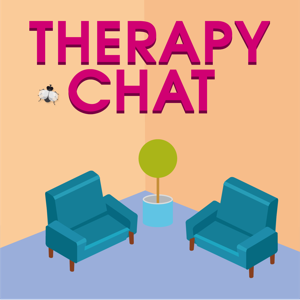
Sign up to save your podcasts
Or




Bridging EMDR and Somatic Experiencing: A Conversation with Amanda Johnson & Rachel Cagle
Curious about how EMDR and Somatic Experiencing can work together? In this episode of Notice That, we explore the integration of these two modalities, the challenges and rewards of blending them, and how they can enhance trauma therapy. Tune in to hear Amanda Johnson and Rachel Cagle share their insights and experiences with Jen.
Listen to the Full Episode: Somatic Experiencing and EMDR: Interview with Amanda Johnson and Rachel Cagle
Why Blend EMDR and Somatic Experiencing?
Many trauma therapists are trained in both EMDR and SE but struggle with how to integrate them effectively. EMDR provides a structured, protocol-driven approach to trauma reprocessing, while SE is a more fluid, intuitive method focused on tracking bodily sensations and releasing stored survival energy. Despite their differences, these modalities share a common goal: helping clients process trauma in a way that feels safe and regulated for their nervous system.
Our guests, Amanda Johnson, LCSW, and Rachel Cagle, LPC, share their journeys into both EMDR and SE and how they’ve learned to blend them in practice.
💬 Amanda: “I had a profound personal experience with a therapist who integrated EMDR and somatic work. That moment changed everything for me—I realized there was so much more happening in my body than I had been aware of.”
💬 Rachel: “Talk therapy alone felt like it was missing something. When I started receiving somatic therapy as a client, it shifted something internally for me. I knew I wanted to bring that into my work with clients.”
Where EMDR and SE Complement Each Other
Throughout the episode, Amanda and Rachel highlight specific ways that SE can enhance EMDR, particularly for clients who struggle with embodiment.
🔹 Pendulation and Titration: SE emphasizes moving between activation and regulation, mirroring EMDR’s use of dual attention and calm place resourcing. “In SE, we learn to gently introduce activation, pendulate back to safety, and slowly build the nervous system’s capacity for intensity,” Rachel explains.
🔹 Tracking the Body’s Cues: EMDR often includes body scans, but SE provides a deeper framework for understanding bodily signals. Amanda describes how SE helps her notice micro-movements in clients—like subtle shifts in breath or posture—that offer valuable information for the healing process.
🔹 Expanding Affect Tolerance Before Reprocessing: One of the biggest mistakes therapists make in EMDR is pushing into reprocessing before a client has the affect tolerance to stay with activation. SE teaches clinicians how to gradually increase that tolerance, making EMDR more effective. “If a system doesn’t yet know how to process and release activation, it’s too early for trauma processing,” Amanda explains.
Challenges in Integration
Despite their synergy, integrating these approaches can be tricky. Amanda shares a formative experience early in her training where she presented an EMDR case at a Peter Levine case consultation.
💬 Amanda: “I had just finished my EMDR training and had worked with a client using a single-episode trauma approach. When I described this in the consultation, I felt like I had made a huge mistake—like EMDR wasn’t supposed to be used for this client’s complex trauma history. That moment really threw me. I actually put EMDR on the shelf for a while because I wasn’t sure how to reconcile the two approaches.”
For Rachel, the challenge has been introducing SE concepts to long-term EMDR clients.
💬 Rachel: “With newer clients, I can naturally integrate both approaches from the beginning, but with established clients, I sometimes have to introduce SE more explicitly. It can feel like I’m asking them to do something totally different, and that takes some adjusting.”
Do Therapists Need Formal SE Training to Work Somatically?
If you’re an EMDR therapist who wants to bring in more somatic awareness but isn’t sure if full SE training is the right path, Amanda and Rachel suggest exploring:
✅ Polyvagal Theory: Learning about nervous system states can significantly enhance your EMDR work.
✅ Shorter Somatic Trainings: Many organizations offer introductory somatic courses that are less intensive than full SE certification.
✅ Personal Somatic Work: One of the best ways to integrate somatics into your practice is to experience it yourself. “If we’re asking our clients to engage with their bodies in this way, we should be doing that work, too,” Amanda emphasizes.
Final Thoughts: An Ongoing Integration
Blending EMDR and SE isn’t about choosing one over the other—it’s about allowing both to influence the way we show up with clients. As Amanda puts it:
💬 “EMDR gave me the coloring book—the structure and framework—but SE taught me how to color outside the lines in a way that makes sense for each client.”
For therapists who feel torn between structured and fluid approaches, Rachel offers this encouragement:
💬 “Everything doesn’t have to fit neatly into a model. The best therapy is relational, responsive, and flexible. Give yourself permission to integrate what works for you.”
Connect with Amanda & Rachel
If you’re interested in learning more about integrating EMDR and SE, Amanda and Rachel both offer consultation:
🔹 Amanda Johnson, LCSW – amandajohnsonlcsw.com
🔹 Rachel Cagle, LPC – Connect via Beyond Healing
What are your thoughts on blending EMDR and SE? Have you tried integrating somatic approaches into your trauma work? Let us know in the comments below!
See Privacy Policy at https://art19.com/privacy and California Privacy Notice at https://art19.com/privacy#do-not-sell-my-info.
 View all episodes
View all episodes


 By Jen Savage and Bridger Falkenstien
By Jen Savage and Bridger Falkenstien




4.8
304304 ratings

Bridging EMDR and Somatic Experiencing: A Conversation with Amanda Johnson & Rachel Cagle
Curious about how EMDR and Somatic Experiencing can work together? In this episode of Notice That, we explore the integration of these two modalities, the challenges and rewards of blending them, and how they can enhance trauma therapy. Tune in to hear Amanda Johnson and Rachel Cagle share their insights and experiences with Jen.
Listen to the Full Episode: Somatic Experiencing and EMDR: Interview with Amanda Johnson and Rachel Cagle
Why Blend EMDR and Somatic Experiencing?
Many trauma therapists are trained in both EMDR and SE but struggle with how to integrate them effectively. EMDR provides a structured, protocol-driven approach to trauma reprocessing, while SE is a more fluid, intuitive method focused on tracking bodily sensations and releasing stored survival energy. Despite their differences, these modalities share a common goal: helping clients process trauma in a way that feels safe and regulated for their nervous system.
Our guests, Amanda Johnson, LCSW, and Rachel Cagle, LPC, share their journeys into both EMDR and SE and how they’ve learned to blend them in practice.
💬 Amanda: “I had a profound personal experience with a therapist who integrated EMDR and somatic work. That moment changed everything for me—I realized there was so much more happening in my body than I had been aware of.”
💬 Rachel: “Talk therapy alone felt like it was missing something. When I started receiving somatic therapy as a client, it shifted something internally for me. I knew I wanted to bring that into my work with clients.”
Where EMDR and SE Complement Each Other
Throughout the episode, Amanda and Rachel highlight specific ways that SE can enhance EMDR, particularly for clients who struggle with embodiment.
🔹 Pendulation and Titration: SE emphasizes moving between activation and regulation, mirroring EMDR’s use of dual attention and calm place resourcing. “In SE, we learn to gently introduce activation, pendulate back to safety, and slowly build the nervous system’s capacity for intensity,” Rachel explains.
🔹 Tracking the Body’s Cues: EMDR often includes body scans, but SE provides a deeper framework for understanding bodily signals. Amanda describes how SE helps her notice micro-movements in clients—like subtle shifts in breath or posture—that offer valuable information for the healing process.
🔹 Expanding Affect Tolerance Before Reprocessing: One of the biggest mistakes therapists make in EMDR is pushing into reprocessing before a client has the affect tolerance to stay with activation. SE teaches clinicians how to gradually increase that tolerance, making EMDR more effective. “If a system doesn’t yet know how to process and release activation, it’s too early for trauma processing,” Amanda explains.
Challenges in Integration
Despite their synergy, integrating these approaches can be tricky. Amanda shares a formative experience early in her training where she presented an EMDR case at a Peter Levine case consultation.
💬 Amanda: “I had just finished my EMDR training and had worked with a client using a single-episode trauma approach. When I described this in the consultation, I felt like I had made a huge mistake—like EMDR wasn’t supposed to be used for this client’s complex trauma history. That moment really threw me. I actually put EMDR on the shelf for a while because I wasn’t sure how to reconcile the two approaches.”
For Rachel, the challenge has been introducing SE concepts to long-term EMDR clients.
💬 Rachel: “With newer clients, I can naturally integrate both approaches from the beginning, but with established clients, I sometimes have to introduce SE more explicitly. It can feel like I’m asking them to do something totally different, and that takes some adjusting.”
Do Therapists Need Formal SE Training to Work Somatically?
If you’re an EMDR therapist who wants to bring in more somatic awareness but isn’t sure if full SE training is the right path, Amanda and Rachel suggest exploring:
✅ Polyvagal Theory: Learning about nervous system states can significantly enhance your EMDR work.
✅ Shorter Somatic Trainings: Many organizations offer introductory somatic courses that are less intensive than full SE certification.
✅ Personal Somatic Work: One of the best ways to integrate somatics into your practice is to experience it yourself. “If we’re asking our clients to engage with their bodies in this way, we should be doing that work, too,” Amanda emphasizes.
Final Thoughts: An Ongoing Integration
Blending EMDR and SE isn’t about choosing one over the other—it’s about allowing both to influence the way we show up with clients. As Amanda puts it:
💬 “EMDR gave me the coloring book—the structure and framework—but SE taught me how to color outside the lines in a way that makes sense for each client.”
For therapists who feel torn between structured and fluid approaches, Rachel offers this encouragement:
💬 “Everything doesn’t have to fit neatly into a model. The best therapy is relational, responsive, and flexible. Give yourself permission to integrate what works for you.”
Connect with Amanda & Rachel
If you’re interested in learning more about integrating EMDR and SE, Amanda and Rachel both offer consultation:
🔹 Amanda Johnson, LCSW – amandajohnsonlcsw.com
🔹 Rachel Cagle, LPC – Connect via Beyond Healing
What are your thoughts on blending EMDR and SE? Have you tried integrating somatic approaches into your trauma work? Let us know in the comments below!
See Privacy Policy at https://art19.com/privacy and California Privacy Notice at https://art19.com/privacy#do-not-sell-my-info.

536 Listeners

680 Listeners

2,503 Listeners

605 Listeners

1,384 Listeners

287 Listeners

240 Listeners

335 Listeners

441 Listeners

284 Listeners

185 Listeners

344 Listeners

52 Listeners

77 Listeners

38 Listeners